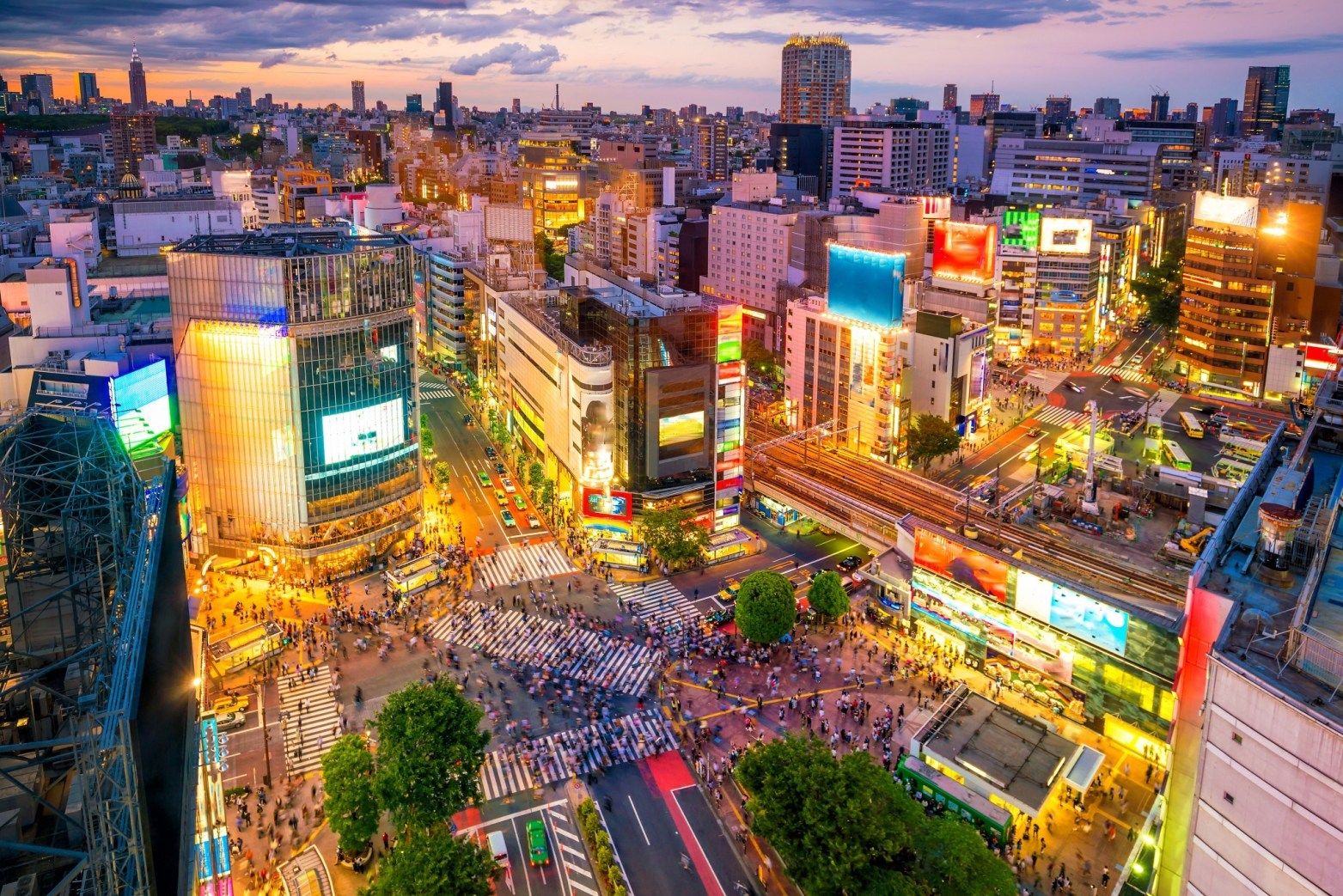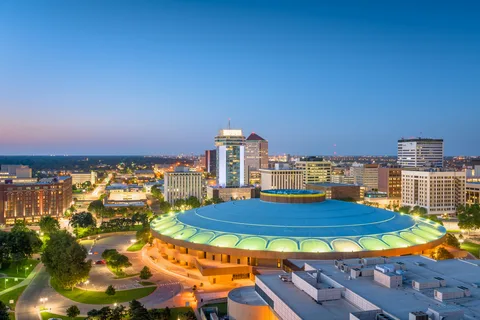Urban Giants: Ranking Tokyo’s Metropolitan Peers
Osaka: The Nation’s Second City
Osaka, with its energetic atmosphere and rich cultural heritage, often vies for the title of Japan’s second city after Tokyo. Boasting a population exceeding 19 million in the Greater Osaka metropolitan area, it stands as a formidable urban giant with a distinct character and economic prowess.
Historically renowned for its role as a trading hub and center of commerce during Japan’s feudal era, Osaka retained this dynamism throughout modernization. The city’s bustling commercial districts, such as Dotonbori and Namba, pulsate with life, showcasing the nation’s consumerist spirit and entrepreneurial flair.

Osaka’s identity is deeply entwined with its vibrant culinary scene. From succulent takoyaki to flavorful okonomiyaki, the city offers a tantalizing array of local delicacies that draw both residents and visitors alike. Street food stalls and traditional restaurants line the streets, creating an immersive gastronomic experience that celebrates Osaka’s diverse flavors.
Beyond its economic and culinary allure, Osaka possesses a rich cultural tapestry woven through historical landmarks, contemporary art spaces, and lively entertainment venues. The Osaka Castle, a majestic symbol of the city’s past, stands as a testament to its samurai heritage, while modern art museums showcase Japan’s contemporary artistic expression.
Osaka’s vibrant street life and energetic atmosphere create a unique urban experience that contrasts with Tokyo’s more polished and sophisticated ambiance. The city’s friendly locals, known for their hearty laughter and infectious enthusiasm, contribute to its welcoming and inclusive environment.
While Osaka may not possess the same global recognition as Tokyo, it undoubtedly stands tall as a dynamic and influential metropolitan center, worthy of being ranked among Japan’s urban giants.
Yokohama: Coastal Metropolis
Yokohama, nestled on the shores of Tokyo Bay, stands as a vibrant testament to Japan’s dynamic urban landscape. As the second-largest metropolis in the nation, it boasts a unique blend of modern dynamism and historical charm.
The city’s history is intricately woven with its economic success. Once a humble fishing village, Yokohama opened its doors to international trade in 1859 under Japan’s “opening” policy. This marked the beginning of its transformation into a bustling port city, attracting foreign investment and fueling industrial growth.
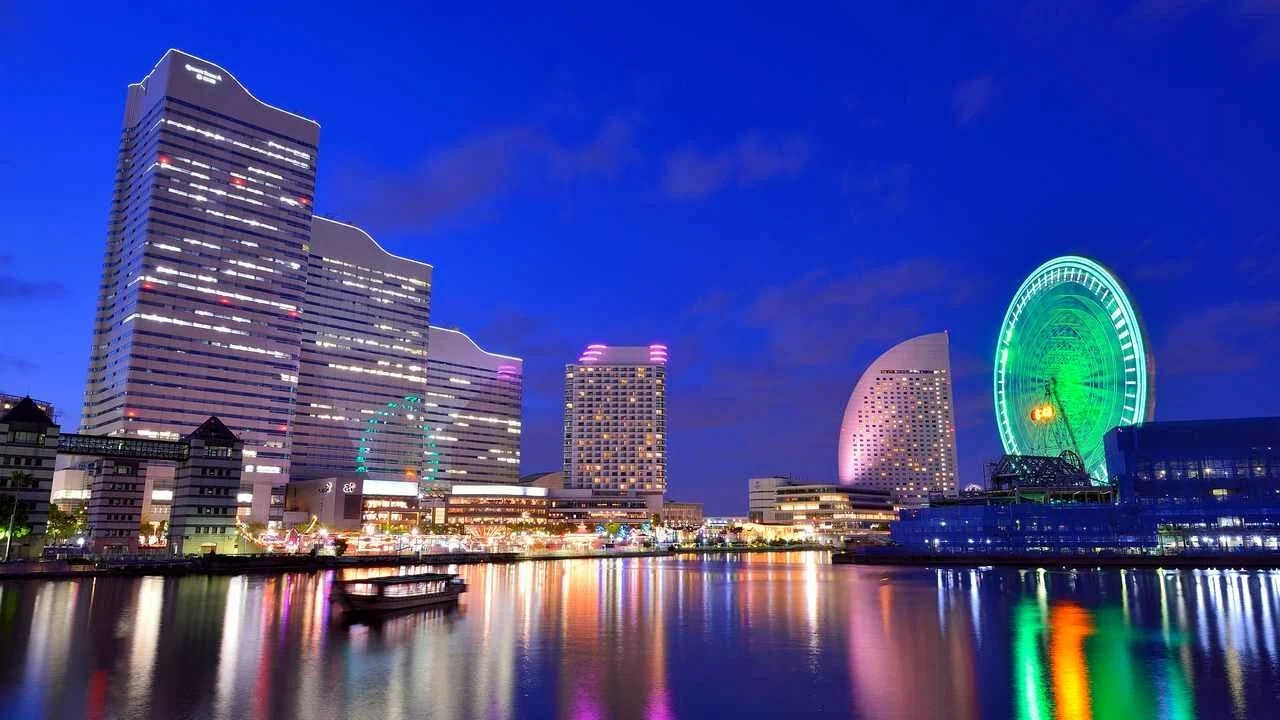
Today, Yokohama is a global hub for commerce, finance, and technology. Its towering skyscrapers, gleaming waterfront developments, and thriving business districts stand as symbols of its economic prowess.
Yet, Yokohama remains deeply connected to its heritage.
The historic Yamate district showcases the city’s past with its charming Western-style architecture and cobblestone streets, remnants of its time as an international settlement.
Beyond its economic significance, Yokohama offers a rich tapestry of cultural experiences.
- The Yokohama Chinatown, one of Japan’s oldest and largest, is a sensory feast with its vibrant street markets, traditional teahouses, and authentic cuisine.
- The Sankeien Garden, a sprawling oasis of traditional Japanese landscaping, provides a tranquil escape from the city’s bustle.
- The Yokohama Museum of Art showcases a diverse collection of modern and contemporary art, reflecting the city’s vibrant creative scene.
Yokohama’s strategic location on Tokyo Bay further enhances its appeal. Easily accessible by rail and road from Tokyo, it serves as a gateway to the capital and beyond. Its extensive public transportation system, including a comprehensive network of subway lines and buses, makes navigating the city a breeze.
Whether exploring its historical gems, indulging in culinary delights, or immersing oneself in its vibrant cultural scene, Yokohama offers an unforgettable urban experience.
Nagoya: Automotive and Cultural Hub
Nagoya, nestled amidst the fertile plains of central Honshu, stands as Japan’s third-largest metropolis. While it may not command the same global recognition as Tokyo or Osaka, Nagoya boasts a rich history, a thriving automotive industry, and a unique cultural identity that sets it apart.
The city’s rise to prominence is intrinsically linked to its industrial heritage. During the late 19th and early 20th centuries, Nagoya became a manufacturing hub, particularly for textiles and ceramics. This legacy persists today, with prominent names like Toyota, Subaru, and Honda solidifying Nagoya’s position as Japan’s automotive heartland.
Beyond its industrial prowess, Nagoya is a cultural melting pot. Its historical roots are evident in attractions like the Nagoya Castle, a majestic Edo-era fortress that dominates the city skyline, and the Atsuta Shrine, one of Japan’s most sacred Shinto sites.
Nagoya’s modern face is equally compelling. The vibrant Sakae district pulsates with energy, offering a dizzying array of shopping options, entertainment venues, and Michelin-starred restaurants. Osu, another lively neighborhood, draws visitors with its traditional street food stalls and eclectic boutiques.

For those seeking a taste of Japanese tradition, Nagoya offers an immersive experience. The Higashiyama District is a treasure trove of historic wooden buildings, tea houses, and crafts workshops, while the Tokugawa Art Museum showcases an impressive collection of Edo-period paintings and artifacts.
Nagoya’s culinary scene is equally diverse, reflecting both its industrial past and modern influences. Miso katsu, a breaded pork cutlet served with a savory miso glaze, is a Nagoya specialty, while the city’s Michelin-starred restaurants serve up innovative Japanese cuisine.
Transportation within Nagoya is efficient and convenient, with an extensive network of subways, buses, and trains connecting all major districts. The city also boasts a modern international airport, making it easily accessible from around the globe.
In conclusion, Nagoya transcends its status as Japan’s third-largest city. Its blend of industrial heritage, vibrant culture, and modern amenities make it a dynamic destination that offers something for everyone.
Beyond the Big Three: Expanding Urban Landscapes
Sapporo: Hokkaido’s Winter Wonderland
Sapporo, the capital city of Hokkaido, stands as a vibrant metropolis where modern urban life harmonizes with the breathtaking beauty of its winter wonderland setting. Known for its captivating snow festivals, Sapporo transcends its reputation as just a cold-weather destination. It boasts a dynamic cultural scene, diverse culinary delights, and a burgeoning technological hub.
Hokkaido’s largest city, Sapporo, is nestled in the southern part of the island, surrounded by rolling hills and the iconic Shikotsu-Toya National Park. Founded in 1869 as the administrative center of Hokkaido, it played a pivotal role in transforming the region from an untamed frontier to a thriving agricultural powerhouse. The city’s urban landscape is characterized by a unique blend of modern architecture and historical landmarks, reflecting its rich past and dynamic present.

Sapporo’s most celebrated event is undoubtedly the Sapporo Snow Festival, held annually in February. This world-renowned spectacle transforms Odori Park into an icy wonderland, showcasing intricate snow sculptures that mesmerize visitors from around the globe. The festival draws millions of attendees, immersing them in a magical atmosphere of creativity and winter artistry.
Beyond its snowy allure, Sapporo offers a diverse culinary experience. Renowned for its fresh seafood, ramen, and jingisukan (grilled mutton), the city’s restaurants cater to every palate. Sapporo Beer Garden & Museum provides a glimpse into the city’s brewing heritage, while local markets offer an abundance of seasonal delicacies.
Sapporo is also emerging as a hub for technology and innovation. Its proximity to Hokkaido University, one of Japan’s leading research institutions, fosters a thriving academic ecosystem. The city is home to numerous startups and tech companies, contributing to its burgeoning economy and reputation as a forward-thinking urban center.
Fukuoka: Gateway to Kyushu
Fukuoka, nestled on the northern shores of Kyushu island, stands as a vibrant testament to Japan’s expanding urban landscape. Often overshadowed by its larger counterparts in the Kanto and Kansai regions, Fukuoka has blossomed into a dynamic metropolis, boasting a unique blend of historical charm, modern dynamism, and an undeniable spirit of innovation.
Historically known as Hakata, Fukuoka played a pivotal role in Japan’s maritime history. As a major trading port since ancient times, it served as a gateway to Kyushu and beyond, facilitating cultural exchange and economic prosperity. This legacy is still evident today in the city’s bustling waterfront district, where traditional shophouses stand alongside modern skyscrapers.
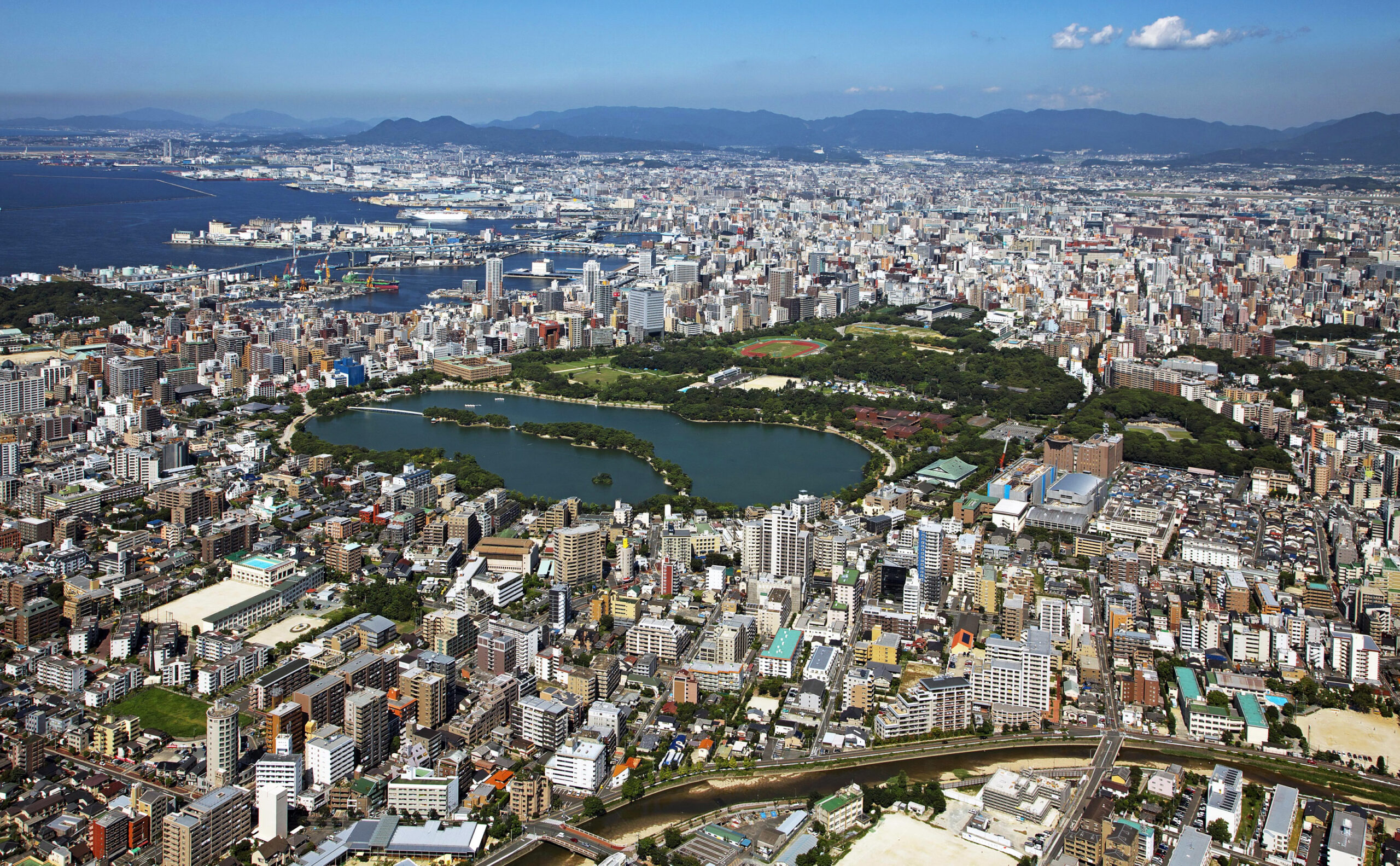
Fukuoka’s urban fabric is defined by a dynamic interplay of tradition and modernity. Its iconic Kushida Shrine, dating back to the 8th century, stands as a serene oasis amidst the urban bustle, offering a glimpse into Japan’s rich spiritual heritage. The Canal City Hakata, a sprawling entertainment complex, embodies the city’s forward-looking spirit, featuring shops, restaurants, and a network of canals that evoke a sense of Venetian charm.
The city’s commitment to sustainability is reflected in its green spaces and innovative transportation systems. Fukuoka boasts numerous parks and gardens, including Ohori Park, a sprawling urban oasis offering respite from the city’s frenetic pace. Its extensive network of subways and buses provides efficient and eco-friendly transportation options for residents and visitors alike.
Fukuoka’s cultural scene is as vibrant as its cityscape. The city is home to renowned museums, including the Fukuoka Art Museum and the Hakata Traditional Crafts Center, showcasing both traditional and contemporary Japanese art forms. Its theaters and performance venues host a diverse range of productions, from traditional kabuki performances to cutting-edge modern dance.
As a major economic hub in Kyushu, Fukuoka attracts a diverse population of entrepreneurs, artists, and researchers. This cosmopolitan atmosphere fosters a spirit of innovation and creativity, driving the city’s continuous growth and development.
Kobe: Port City with a Culinary Heritage
Kobe, often overshadowed by Tokyo and Osaka, presents a fascinating case study in urban evolution beyond Japan’s “Big Three” cities. Situated on the western coast of Honshu island, Kobe boasts a rich history intertwined with its role as a vital port city.
Founded during the Edo period (1603-1867) as a small trading post, Kobe rose to prominence in the late 19th century with the opening of its harbor. The city became a gateway for international trade and immigration, fostering a vibrant multicultural environment.
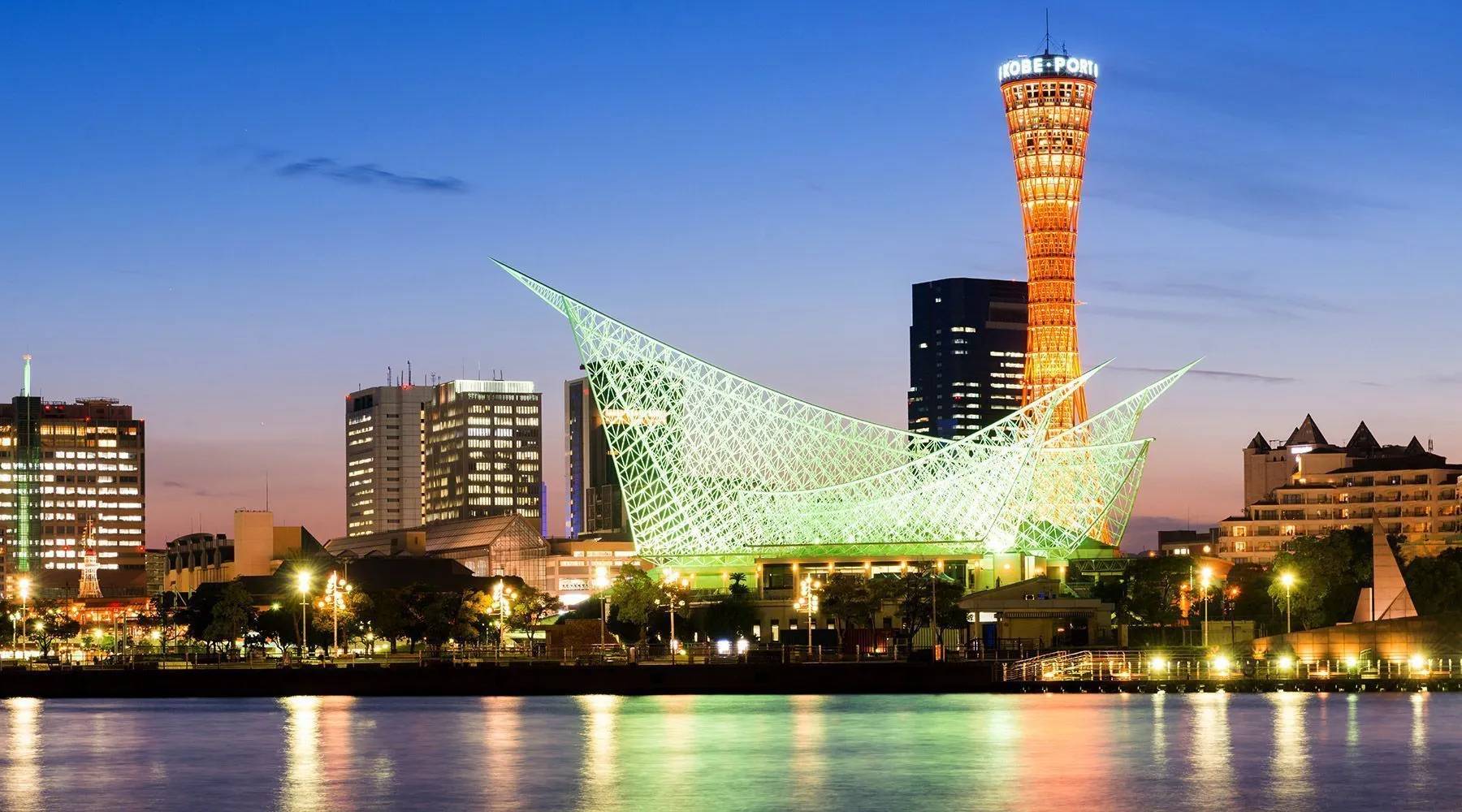
Kobe’s strategic location along the Inland Sea allowed it to become a major center for shipping and manufacturing. Its industrial growth spurred urbanization, transforming Kobe into a bustling metropolis known for its modern infrastructure and architectural landmarks.
Beyond its economic significance, Kobe is renowned for its distinctive culinary heritage, influenced by its diverse population and access to fresh seafood.
- Kobe beef, internationally acclaimed for its exceptional marbling and flavor, is a testament to the city’s commitment to culinary excellence.
- The Kobe Port Tower, a striking symbol of the city’s maritime legacy, offers panoramic views of the cityscape and surrounding coastline.
- The Kitano Ijinkan district, featuring preserved Western-style residences built during the late 19th century, provides a glimpse into Kobe’s international past.
Kobe continues to evolve as a dynamic urban center, balancing its industrial roots with its growing cultural and tourist appeal. Its unique blend of history, culture, and innovation makes it a compelling destination beyond Japan’s most popular cities.
Emerging Metropolitan Powerhouses
Saitama: Tokyo’s Suburbia in the Spotlight
Saitama Prefecture, often seen as Tokyo’s sprawling suburb, is steadily emerging as a metropolitan powerhouse in its own right. While lacking the iconic landmarks and global recognition of its neighbor, Saitama boasts a rapidly growing economy, a high quality of life, and a diverse range of attractions.
Driving Saitama’s economic ascent is a thriving business landscape anchored by major industries such as manufacturing, technology, and logistics. The prefecture is home to numerous headquarters for prominent Japanese companies, attracting talent and investment from across the country. Furthermore, its strategic location near Tokyo provides easy access to key markets and transportation hubs.
Beyond economic prowess, Saitama offers residents an enviable quality of life. Characterized by well-maintained infrastructure, extensive green spaces, and a safe environment, Saitama provides a sense of balance between urban convenience and suburban tranquility. The prefecture boasts numerous parks, museums, and cultural venues, catering to a wide array of interests.
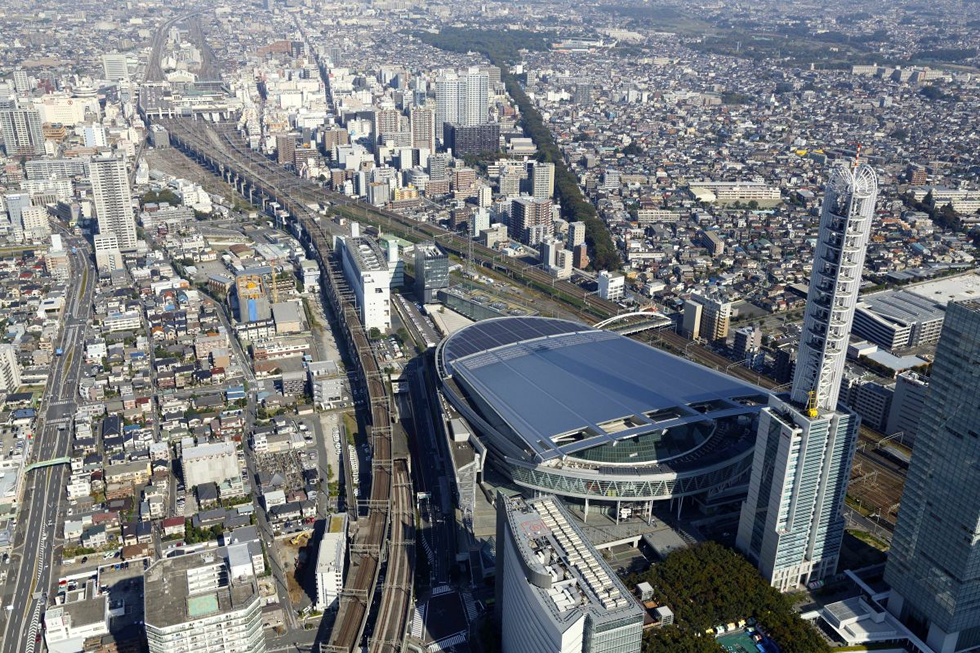
Saitama’s cultural scene is rich and diverse. From traditional Japanese gardens and temples to modern art galleries and entertainment complexes, there is something for everyone. The city of Saitama itself is known for its vibrant nightlife and culinary delights, offering a taste of Japan’s urban energy.
In recent years, Saitama has witnessed a surge in international interest. Its proximity to Tokyo makes it an attractive destination for tourists seeking a more authentic Japanese experience beyond the capital’s bustling streets. The prefecture is also becoming increasingly popular as a location for foreign businesses and investors seeking a cost-effective yet thriving business environment.
As Saitama continues to develop, its potential as a major metropolitan center is undeniable. With a strong economy, high quality of life, and diverse attractions, Saitama is poised to become a destination that rivals Tokyo in prominence, showcasing Japan’s dynamism and growth beyond the capital city limits.
Kawasaki: Industrial Growth Meets Urban Renewal
Kawasaki, situated just south of Tokyo, exemplifies the dynamic interplay between industrial heritage and urban renewal. For decades, the city was synonymous with its robust manufacturing base, particularly in the shipbuilding and motorcycle industries. Kawasaki Heavy Industries, a globally recognized name, has its roots firmly planted in this history.
However, Kawasaki is not content to rest on its laurels. Recognizing the evolving needs of the 21st century, it has embarked on ambitious urban revitalization projects. The city’s waterfront, once dominated by factories, is now undergoing a dramatic transformation into a vibrant mixed-use district.
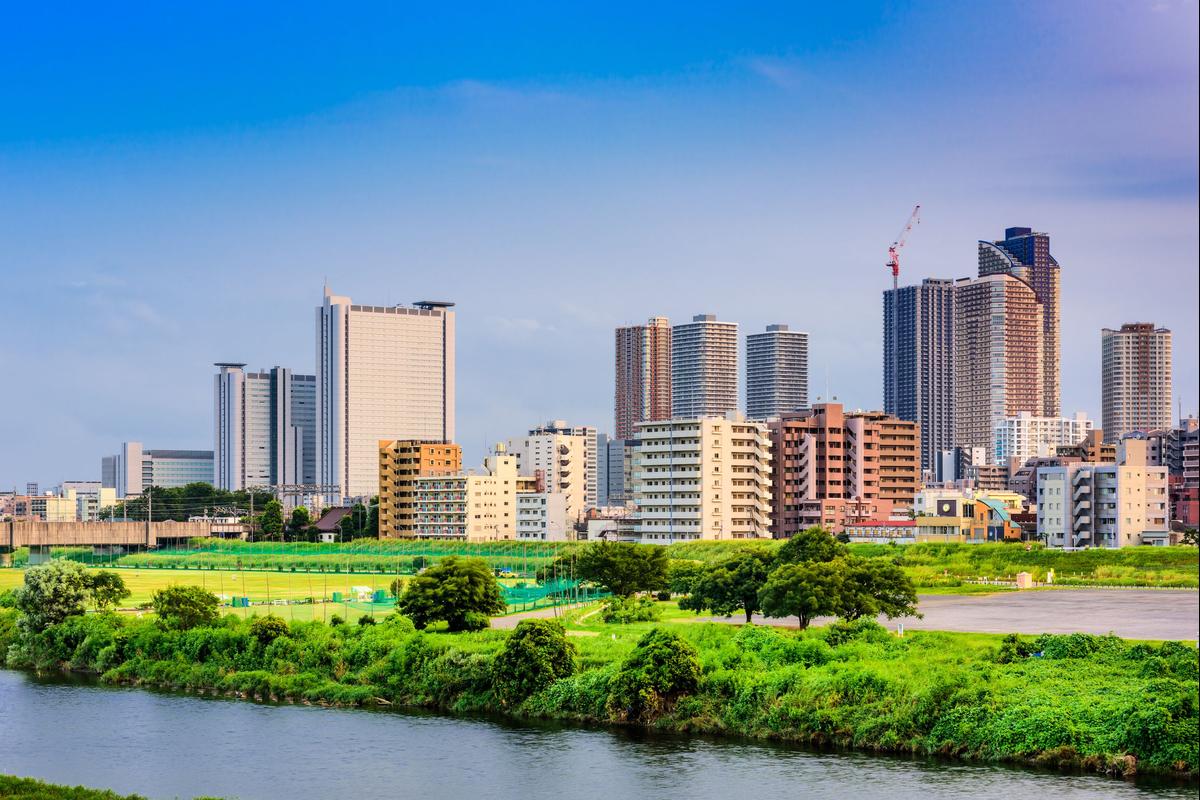
Modern residential towers, sleek office buildings, and leisure facilities are emerging alongside preserved historical landmarks, creating a unique blend of the old and the new. Kawasaki’s commitment to green spaces is evident in its extensive network of parks and gardens, adding a touch of tranquility amidst the urban buzz.
The city boasts a thriving arts scene, with numerous museums, galleries, and performance venues showcasing both local talent and international artists. Kawasaki’s culinary landscape is equally diverse, offering everything from traditional Japanese cuisine to trendy international flavors.
With its strategic location, robust infrastructure, and dedication to progress, Kawasaki is well-positioned to remain a leading metropolitan powerhouse in the years to come. Its journey serves as a testament to the adaptability and resilience of Japanese cities in navigating the complexities of globalization and technological advancement.
Chiba: Coastal Life and Technological Advancement
Chiba City, located just east of Tokyo, stands as a dynamic example of an emerging metropolitan powerhouse. Situated on the Pacific coast, Chiba boasts a vibrant mix of coastal lifestyle and technological innovation. While often overshadowed by its more famous neighbor, Chiba offers a compelling blend of urban amenities, natural beauty, and economic opportunity.
Chiba’s history is deeply intertwined with fishing and maritime industries. Its harbor serves as a crucial port for international trade, connecting Japan to the world. This legacy continues to shape the city’s identity, with seafood markets overflowing with fresh catches and waterfront areas buzzing with activity.
However, Chiba has successfully transitioned beyond its traditional roots to embrace technological advancements. The Chiba Prefecture is home to numerous research institutions and tech companies, particularly in fields like robotics, telecommunications, and biotechnology. This focus on innovation attracts skilled professionals and drives economic growth, positioning Chiba as a key player in Japan’s future technological landscape.
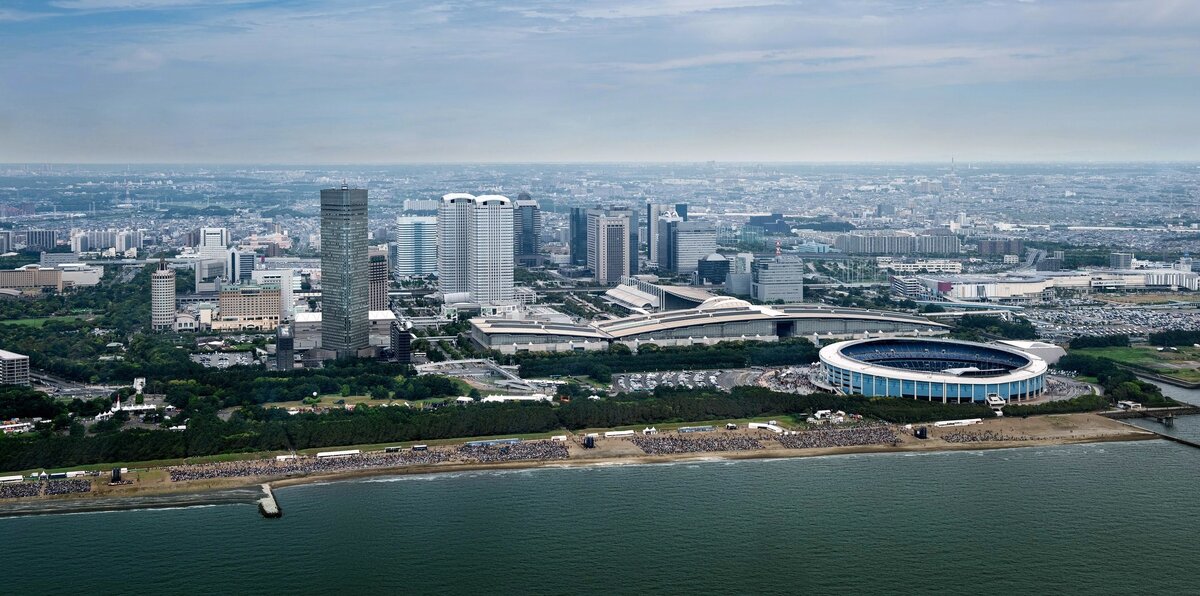
The city itself offers a high quality of life. Its well-developed public transportation system connects residents to Tokyo and other major hubs, while also facilitating movement within the city. Parks and green spaces provide ample opportunities for relaxation and recreation, offering respite from the urban bustle. Chiba’s beaches are popular destinations, attracting locals and visitors alike with their sandy shores and clear waters.
Chiba’s diverse cultural offerings contribute to its vibrant atmosphere. Museums showcase art, history, and science, while theaters and music venues host a variety of performances. The city’s culinary scene is equally impressive, boasting a range of restaurants serving both traditional Japanese cuisine and international flavors.
Looking ahead, Chiba is poised for continued growth and development. Its strategic location, strong economy, and commitment to innovation make it an attractive destination for businesses, investors, and residents. As Japan’s population continues to shift towards metropolitan areas, Chiba is well-positioned to capitalize on these trends and solidify its status as a major economic and cultural hub.
Sendai: The “Manchester of Japan” with a Cultural Heart
Nestled on the coast of northeastern Japan, Sendai boasts a vibrant cultural scene and a thriving industrial heartland, earning it the nickname “Manchester of Japan”. While not as populous as Tokyo or Osaka, Sendai stands tall as a significant economic and cultural force.
- Sendai’s industrial prowess stems from its long history as a manufacturing hub.
- The city is renowned for its production of machinery electronics automotive parts.
- These industries generate considerable wealth, contributing significantly to Japan’s national economy.
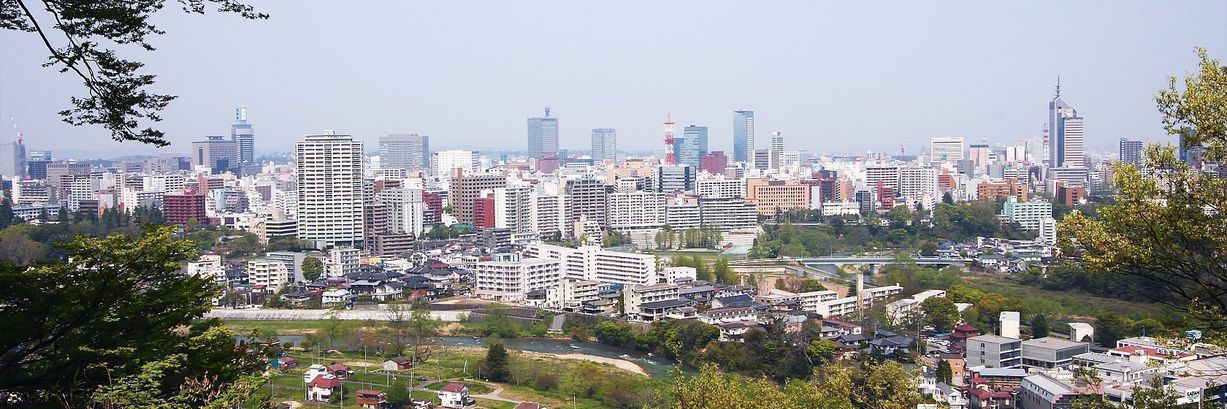
Beyond its industrial strength, Sendai pulsates with a rich cultural heritage. The city is home to numerous historical landmarks and cultural institutions:
- Sendai Castle, a majestic symbol of the city’s samurai past.
- Zuihoden, an elaborate mausoleum complex showcasing intricate craftsmanship.
- The Miyagi Museum of Art , which houses a diverse collection of Japanese and international art.
Sendai’s vibrant arts scene thrives with numerous theaters, music venues, and galleries. The city is also celebrated for its annual festivals, including the Tanabata Festival, known for its enchanting paper streamers adorning the streets.
Furthermore, Sendai’s commitment to sustainability and green initiatives has earned it recognition as a model eco-city.
- 10 Interesting Facts About Equatorial Guinea - October 1, 2024
- 10 Biggest Airports In The United States - September 29, 2024
- 10 Animals That Live In Coniferous Forests - September 29, 2024

